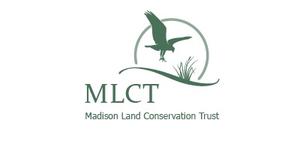The Camp Hadley Trail begins on Copse Road (Trailhead 1), passes through remnants of a historic Civilian Conservation Corps (CCC) Camp, and after reaching and paralleling Ridge Road (Trailheads 2 and 3), terminates at its junction with the Lost Pond Trail. From this point, there are several options for either returning to Trailhead 1 or for continuing along one or more connecting trails.
Just east of the parking turnout, and accessed by an old roadway, are the foundations of two Camp Hadley buildings: an apparent water pumping station on the north, and a vehicle maintenance shop to the south. A few feet behind these, in a wetland drainage area, is a raised slab of a probable well or spring house. Note the stone-lined and culverted stream beds, “landscaped” with arborvitae trees, that circumscribe the well house slab, and then lead to a firepond. The spur trail can be accessed here just north of the firepond, then follow the old roadbed trail 200 feet to where it joins the main trail from Trailhead 1.
From Trailhead 1 by the Camp Hadley sign, the trail follows the blazes along the old hardtopped access road for 460 feet to where the road splits. The left fork (unblazed) leads to the first of two road loops that circle back to the main road and trail. To the left of the road split, the spur trail cuts sharply back to the pond and the camp water supply system mentioned earlier. The right fork leads into the main encampment area. Almost immediately on the right is the collapsed stone chimney and fireplace of an “administrator’s” cabin, one of several scattered to the south. The locations of these cabins, as well as other buildings and walkways are marked by yews and arborvitaes that once decorated the camp.
A few feet beyond, and just before another road split, a descending stone stairway on the right leads to the probable location of a barracks building. Stone work and culverting in this lower area to the north reveal that it was once crisscrossed with roads and walkways.
Following the trail on the right fork, which soon splits, leads to either the left side of most of the camp ruins, or swings right, passing around through the camp before rejoining. At this point, there are also landscape arborvitae and yews that guard the entrances and mark corners and walkways.
Starting at the CCC camp and following the blue blazes east, leads to a series of four excavations on the left side of the trail, one with a stone-lined drainage ditch leading to a small pond, which in turn is drained. The trail enters a small clearing near the State Forest boundary and circles north and near the east end of the small pond, crossing the drainage ditch.
Shortly thereafter, the trail cuts east to the banks of a wide, slow-moving stream and wetland. The west bank of the stream leads to a step-stone crossing, which can be difficult to cross in times of high water. Once across, the trail turns left and heads north and eventually northeast, where it ascends a few feet, passing by some very large tulip poplar and oaks were cut in the 1997 harvest operation. Eventually (0.6 mile from Trailhead 1), at the crest of a ridge-knoll, the trail passes Ridge Road and the short spur to Trailhead 2. On the knoll top is a rock outcrop, offering scenic views of the forest just traveled. The trail parallels Ridge Road for nearly 300 feet to an old logging road. Here, it turns either east (right) 175 feet to Trailhead 3 on Ridge Road, or west and then ascends gradually to higher ground by an old field corner marked by stone walls. Continue north to a wide stream crossing near State Forest boundary. This block of state forest was harvested in 1990.
Young beech and other tree species are starting to grow in the openings created when canopy trees were removed. A few hundred feet beyond, the trail ends where it joins Trail #6. To the right, Trail #6 ends in 200 feet; 200 feet to the left it branches, going either right (north) to join Trail #7 and exiting on Warpas Road near the Church of Latter Day Saints, or straight west back to Trailhead 2 (Trail #6) on Warpas Road. From Trailhead 2 back to the parking area along Warpas Road is 0.4 mile.
Camp Hadley, one of 23 such camps in Connecticut, was built in 1935 by men billeted at an already established camp in Chatfield Hollow. About 200 young men between the ages of 18 and 25, including 18 supervisors and foremen, were assigned here.
The CCC was a program of the Works Project Administration (WPA) , established by President Franklin Delano Roosevelt during the depression. This program provided employment for young men. Conservation jobs included creation of parks, road construction, etc. Camp Hadley men were of great benefit in cleaning up Madison after the 1938 hurricane.
The Corps ended when World War II began in 1941. The camp buildings, built to Army specifications, included large barracks, a mess hall, recreation hall, water pumping station, vehicle maintenance garage, latrine, cabins for camp superintendent and supervisors, chapel and several others

Take exit 61 Durham Hill Road (Route 79). Proceed north on Route 79 then travel west on Green Hill Road to Copse Road and north to Warpas Road. Parking is available at the many of the trailhead locations for each of the trails either on Opening Hill Road, Warpas Road, or Jefferson Park Road.
Success! A new password has been emailed to you.